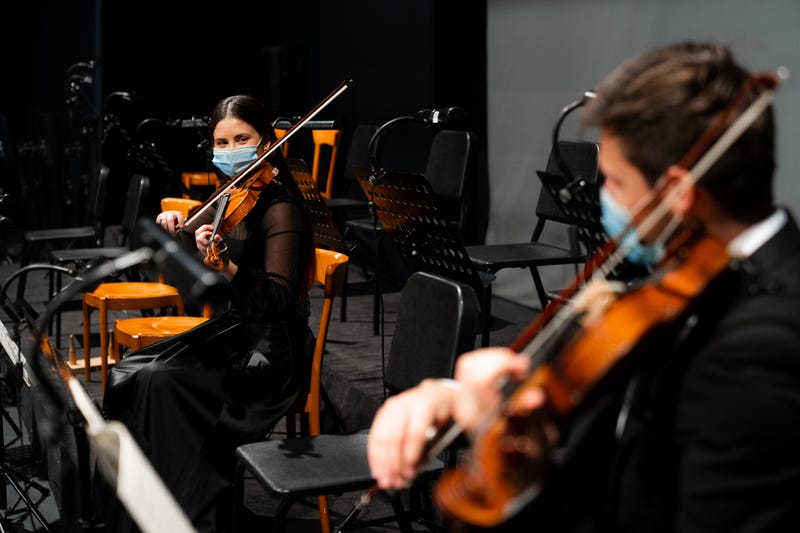
For most of the past year, performing artists were forced off-stage due to the COVID-19 pandemic.
Now that our pre-virus lives can start returning in just over a week when California fully reopens, how can we safely resume these activities?
John Volckens, Professor of Mechanical Engineering at Colorado State University, did an extensive study on what particles are released from the body during performing arts such as singing, acting or playing instruments and how that impacts COVID-19 transmission.
“What we found is that singing definitely emits more particles than speaking. Men tend to emit more particles than women. Adults tend to emit more particles than children,” Volckens said on KCBS Radio’s Ask and Expert on Friday. “You can explain those differences physiologically. Men tend to have larger lungs than women. If you’re pushing more air in and out of your body, then you tend to emit more particles. Men tend to sing and talk more loudly than women or children. The volume of your voice is a predictor of how many particles come out. Those two things explain most of the differences between these groups.”
His research takes on added importance as the state-earmarked June 15 deadline approaches and most of California’s distancing and masking rules are eliminated.
Volckens said that the most important way for performing arts centers and venues to remain safe is if every person is inoculated.
“If everyone is vaccinated, then you can do whatever you want. The data shows that once you’re vaccinated you have excellent protection against the coronavirus,” Volckens said, “The vaccine works.”
However, the situation is complicated when even a few people in the building are not vaccinated.
“If you’re in a situation where you’ve got 18 people vaccinated, and two that aren’t, then you probably need to take steps to protect those two individuals that aren’t vaccinated,” he said. “You want to separate those people, you want them to be in a room with high ventilation.”
“You want to be cycling clean air in that facility as fast as possible,” Volckens added.
He said performing arts settings should do all they can to protect people inside the building, whether that be requiring their performers are vaccinated or creating adequate ventilation.
“Can someone who is infected with the coronavirus, aymptomatic positive, who is performing in a venue infect other people who are unvaccinated? Absolutely that’s possible. We’ve seen that with many performing arts super spreader events early in the pandemic,” Volckens said. “I think performing arts venues should be more transparent about their ventilation and I think probably need to be more proactive about their ventilation.”

